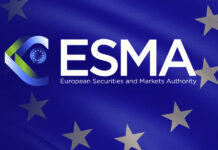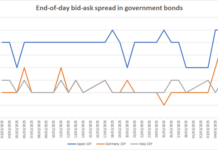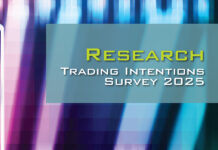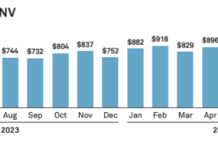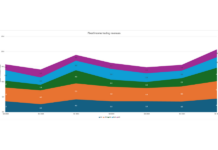Record issuance and higher holdings prompted significant US rates volume growth in January. While electronic trading maintained its market share, manual processes remain popular choices, Coalition Greenwich has found.
Bond issuance from the US Treasury was up 7%, equating to US$2.7 trillion in new supply, according to the firm’s report. Primary dealers increased their Treasury holdings to absorb this, continuing a trend that began after the US election last November, with US$365 billion in holdings reported in January. This marks a 50% year-on-year (YoY) increase, and a record high.

Fixed income market volatility fell by 14% year-on-year in January, according to the MOVE Index, reaching 95.12.
The average daily notional volume for rates rose by 8% over the year, reaching US$963 billion. E-trading remained static as a percentage of this, up just 1 percentage point YoY to 58% of the market. Dealer-to-client e-trading remained static. Coalition Greenwich states that platform and protocol market share has also stayed flat.
Non-electronic trading continues to be an important element of the market. In January, request-for-quote (RFQ) protocols took nearly a quarter (24%) of total volumes, and central limit order books (CLOB) 18%. More than US$400 billion of US rates trading is executed manually, the report says, emphasising the continued presence of voice trading – especially for off-the-runs, large trades, and smaller firms with limited tech capabilities.
“While some of this volume will find its way into existing solutions, most will remain bilateral for the foreseeable future, but with less manual entry and more automation,” the report predicted.

This could include the use of natural language-processing phone systems, it suggested, adding that electronic workflows can enhance existing phone and chat-based trading.
The report goes on to highlight streaming and auction-based protocols as areas of growth, expressing the complexity of walling off streaming volumes from other execution methods.
“RFQs can result in executing via a stream with a better price than the RFQ respondents and aggregated streams that are consumed by liquidity takers as a CLOB,” the group explained. “While we estimate “pure” streaming captures only 9% of market volume, its reach goes much wider.”
Coalition Greenwich concluded: “While e-trading in the Treasury market is in its third decade, innovation is still on the horizon.”
©Markets Media Europe 2025





